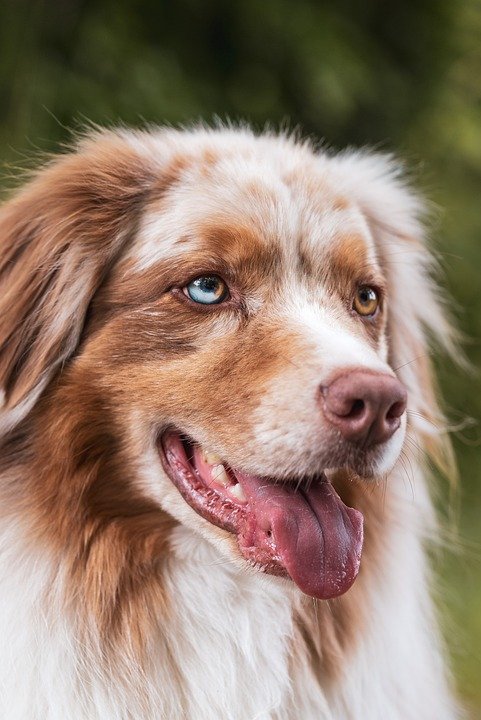Pawsitively Hydrated: Essential Summer Water Tips for Your Furry Friend

As the summer months approach, it’s essential to think about the health and well-being of our furry friends. The warm weather can be particularly challenging for dogs, and one of the most critical aspects of their care is ensuring they stay hydrated. Dehydration can be a significant issue for dogs, especially during the summer, and it’s crucial to take steps to prevent it. In this article, we’ll explore the importance of hydration for dogs, the risks associated with dehydration, and provide essential summer water tips to keep your furry friend pawsitively hydrated.
Dogs, like humans, need access to fresh, clean water at all times, but during the summer, their water needs increase significantly. As the temperature rises, dogs tend to pant more, which helps to evaporate water from their tongue, mouth, and lungs, leading to a loss of moisture. If they don’t have access to enough water to replenish this loss, they can quickly become dehydrated. Dehydration can lead to a range of health problems, including urinary tract infections, kidney stones, and even heatstroke.
The signs of dehydration in dogs can be subtle, but it’s crucial to recognize them to take action early. Some common symptoms include:
- Excessive panting
- Dry, sticky gums
- Dark yellow or brown urine
- Loss of appetite
- Sunken eyes
- Rapid heartbeat
If you notice any of these symptoms in your dog, it’s essential to take action immediately. Move them to a cool, shaded area, and provide them with small amounts of water to drink. You can also try using a wet cloth to help lower their body temperature. If the symptoms persist or worsen, seek veterinary attention right away.
So, how can you keep your furry friend pawsitively hydrated during the summer? Here are some essential summer water tips:
Provide Access to Fresh Water
Ensure your dog always has access to fresh, clean water. Change the water frequently to prevent bacterial growth, and consider using a water fountain or filtered water bowl to keep the water clean and appealing.
Monitor Water Intake
Keep an eye on your dog’s water intake, especially during hot weather. If you notice they’re not drinking enough, try adding a small amount of low-sodium chicken broth to their water to make it more appealing.
Offer Ice Cubes
Ice cubes can be a great way to keep your dog cool and hydrated. You can add them to their water or offer them as a treat. You can also try making frozen treats, such as frozen Kongs or ice cubes made from chicken or beef broth.
Avoid Overexertion
Avoid exercising your dog during the hottest part of the day, and opt for shorter, more frequent walks instead. This will help prevent overheating and reduce the risk of dehydration.
Provide Shade and Ventilation
Ensure your dog has access to shade and ventilation, especially when they’re outside. You can use a canopy or umbrella to provide shade, and consider using a fan to improve ventilation.
Watch for Heatstroke
Heatstroke can be a significant risk for dogs during the summer, especially for breeds with flat faces, such as Pugs and Bulldogs. If you notice any symptoms of heatstroke, including excessive panting, drooling, or collapse, seek veterinary attention immediately.
In addition to these summer water tips, there are several other ways to keep your dog hydrated and cool. For example, you can try using a cooling vest or bandana to help keep them cool, or provide them with a cool, damp towel to lie on. You can also try adding a small amount of electrolyte-rich substances, such as Pedialyte, to their water to help replenish lost electrolytes.
It’s also essential to consider your dog’s individual needs when it comes to hydration. For example, dogs with certain medical conditions, such as kidney disease or heart disease, may require more frequent monitoring and adjustments to their hydration plan. Similarly, dogs of different ages and breeds may have different hydration needs. For example, older dogs may be more prone to dehydration due to age-related declines in thirst sensation and mobility, while younger dogs may be more susceptible to heatstroke due to their high energy levels.
By following these essential summer water tips and considering your dog’s individual needs, you can help keep your furry friend pawsitively hydrated and cool during the summer months. Remember to always be vigilant and monitor your dog’s behavior and health closely, and don’t hesitate to seek veterinary attention if you have any concerns.
Conclusion
In conclusion, keeping your furry friend hydrated during the summer is crucial to their health and well-being. By providing access to fresh water, monitoring water intake, offering ice cubes, avoiding overexertion, providing shade and ventilation, and watching for heatstroke, you can help prevent dehydration and keep your dog cool and comfortable. Remember to consider your dog’s individual needs and adjust your hydration plan accordingly. With a little planning and attention, you can help ensure your furry friend stays pawsitively hydrated and enjoys a happy, healthy summer.
Tags
What do you think?
Related Articles

Pawsitive Vibes: A Beginner’s Guide to Holistic Pet Care
As a pet owner, you want the best for your furry friend, and that includes providing them with a happy, healthy, and balanced life. While

Paws & Effect: Understanding the Key Differences Between Puppy and Adult Dog Food
As a dog owner, it’s essential to understand the nutritional needs of your furry friend, especially when it comes to their diet. One of the

The Fiber Fix: How High Fiber Dog Food Can Transform Your Pet’s Digestion
As a dog owner, there’s nothing more heartbreaking than seeing your furry friend struggle with digestive issues. Whether it’s diarrhea, constipation, or vomiting, gastrointestinal problems
